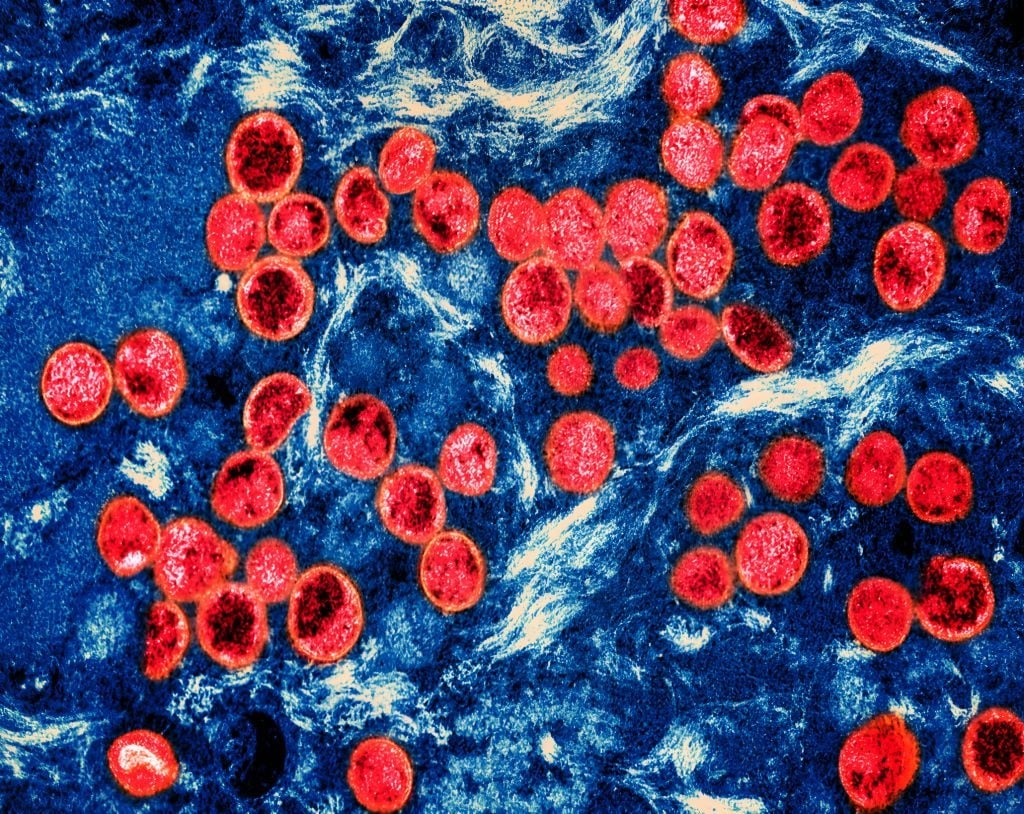In a concerning development, the United States has confirmed its first case of a more aggressive strain of mpox, formerly known as monkeypox, a viral disease that initially garnered widespread attention during the global outbreak in 2022. The new strain has raised alarms due to its heightened transmissibility and the potential for more severe illness, prompting health officials to ramp up their responses and public awareness. This article explores the details surrounding the emergence of the new strain, its potential impact, and the measures being taken to address this evolving public health concern.
What is Mpox?
Mpox is a viral disease caused by the mpox virus, which is part of the Orthopoxvirus genus, the same family that includes the variola virus (which causes smallpox) and the vaccinia virus (used in the smallpox vaccine). The disease was first identified in monkeys in 1958, but it wasn’t until human cases were reported in the Congo Basin in Africa in 1970 that mpox began to be recognized as a human illness.
Mpox is typically transmitted through close contact with infected animals, bodily fluids, or lesions. In humans, it can cause symptoms similar to smallpox, such as fever, body aches, chills, and rashes that often progress to raised, fluid-filled lesions. Though historically rare, outbreaks of mpox in non-endemic areas—especially in urban centers—began to surface in 2022, leading to widespread concern.
The Emergence of a More Aggressive Strain
The U.S. Centers for Disease Control and Prevention (CDC) confirmed the first case of a more aggressive strain of mpox in early November 2024. This new variant, which is believed to have mutated from the strain responsible for the 2022 outbreak, has been shown to exhibit faster transmission rates and a higher severity of symptoms.
Health officials have not disclosed extensive details about the specific genetic mutations in the virus, but early studies suggest that this new strain is more easily spread through respiratory droplets, meaning it could be transmitted more readily in environments where people are in close contact, such as households, healthcare settings, or social gatherings.
The patient, whose identity has not been revealed, was diagnosed after experiencing more intense symptoms, including extensive skin lesions and a prolonged fever. The individual’s condition has been described as being more severe than what has been typically observed in past mpox infections, which are often self-limited with supportive treatment. Fortunately, the patient is currently receiving appropriate medical care, and their condition is reportedly improving, though the case has raised significant concerns among experts.
Why is This Strain More Concerning?
The primary concern surrounding this more aggressive strain of mpox is its potential for increased spread and greater clinical severity. While the original mpox strain spread primarily through direct contact with infected bodily fluids or lesions, this new variant is believed to be more contagious through respiratory droplets. This could lead to faster transmission in crowded settings, such as public transport, schools, and events, making containment more difficult.
Additionally, the new strain appears to cause more severe symptoms in some patients. While traditional mpox infections typically resolve within two to four weeks, patients infected with the new strain have shown a higher likelihood of complications, such as secondary bacterial infections, respiratory distress, and extensive scarring from skin lesions. There are also concerns that this strain could be more resistant to existing treatments and vaccines, although this is still under investigation.
The 2022 Mpox Outbreak: A Prelude to the New Strain
The global outbreak of mpox in 2022, which affected multiple countries outside of its typical endemic areas in Central and West Africa, was a significant turning point for the disease. During that outbreak, more than 80,000 cases were reported worldwide, with the U.S. accounting for a large percentage of the cases. The outbreak primarily affected men who have sex with men, though the virus can infect anyone.
The 2022 outbreak underscored the importance of rapid response and the need for heightened public health measures, including vaccination campaigns, education on safer practices, and increased surveillance. Despite efforts to control the spread, such as the rollout of the JYNNEOS vaccine, which is used to prevent both smallpox and mpox, health experts have expressed concerns that the virus could continue to evolve and pose a threat, as seen with the emergence of the new strain in late 2024.
Public Health Response and Measures
In response to the confirmed case of the more aggressive mpox strain, the CDC, along with state and local health departments, has mobilized to track the spread of the virus. Health officials are focusing on increasing surveillance to identify other potential cases and to ensure that proper containment measures are in place.
One of the primary strategies to combat mpox is the administration of the JYNNEOS vaccine, which has shown efficacy in preventing infection, especially when administered early after exposure. Although the vaccine was initially distributed during the 2022 outbreak to at-risk populations, it is expected that the distribution will be expanded to include a wider range of individuals, including healthcare workers and people in high-risk environments, as part of efforts to curtail the new strain’s spread.
In addition to vaccination efforts, public health officials are advising communities to take precautions, especially those in high-risk areas. These include wearing masks in crowded or enclosed spaces, practicing good hygiene, and avoiding close contact with individuals who have visible skin lesions or other signs of infection. For those who have been diagnosed with mpox, isolation is crucial to prevent further transmission.
What to Expect Moving Forward
The emergence of a more aggressive strain of mpox underscores the dynamic and unpredictable nature of viruses, particularly those that can adapt and mutate over time. While health experts remain cautious about the broader implications of this new strain, they have emphasized the importance of early detection, rapid response, and continued vigilance.
In the coming weeks and months, researchers and healthcare professionals will be closely monitoring the spread of the new variant and its impact on the general population. This will involve ongoing studies into the effectiveness of the JYNNEOS vaccine, as well as potential treatments for severe cases. Further genetic sequencing of the virus will be conducted to better understand its mutations and whether existing medical interventions remain effective.
Public education will continue to play a pivotal role in curbing the spread of mpox. As the virus continues to circulate, raising awareness about transmission routes, symptoms, and preventive measures will be critical in keeping communities safe. The public will also need to stay informed about the evolving nature of the virus and adjust their behaviors accordingly.
Conclusion: A New Chapter in the Mpox Story
The confirmation of the first U.S. case of a more aggressive strain of mpox serves as a stark reminder that infectious diseases continue to evolve and present new challenges. While the initial response to the 2022 outbreak demonstrated the capability of public health systems to control the spread, the emergence of this new strain has renewed the need for heightened awareness and preparedness. As experts continue to track the virus, the key to mitigating its impact will be swift action, effective vaccination campaigns, and ongoing research into treatments and preventive measures. The situation remains fluid, but with proper precautions, the public health community is hopeful that the spread of this more aggressive strain can be contained.



